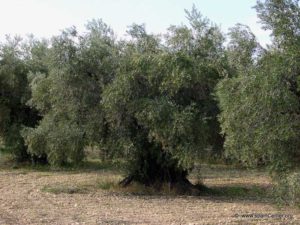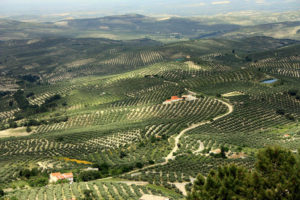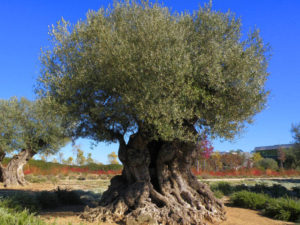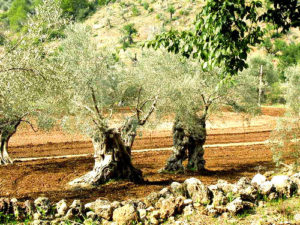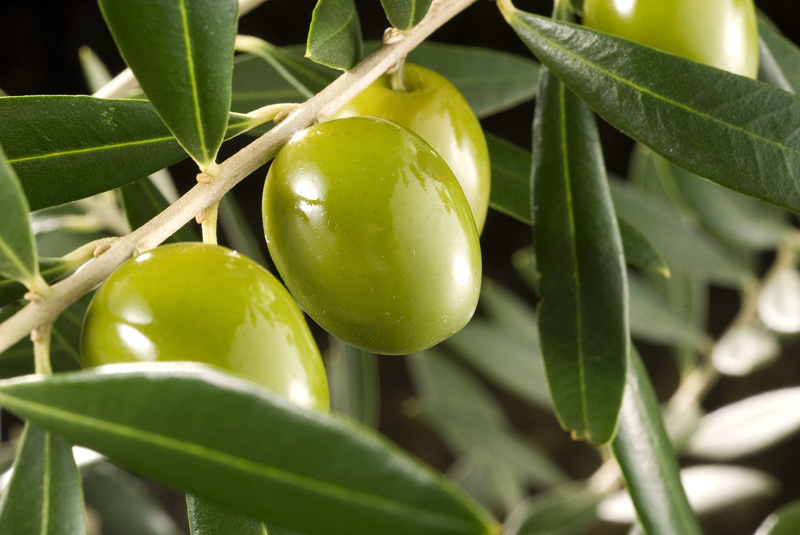In the United Nations emblem, the olive tree is represented in the shape of a crown that covers the world. This symbolizes universal peace. Such is the aura of this legendary tree declared Intangible Cultural Heritage of Humanity by the UNESCO.
If there is a tree considered sacred on Earth, that is the olive tree. This type of tree is recognized in almost all cultures as a symbol of peace, health and longevity. For the Christians it represents the end of the long suffering caused by the Great Flood, through the appearing of a dove which came back to Earth holding an olive branch in her mouth. The Egyptians used its oil to produce soaps, and for the ancient Hebrews it symbolized prosperity and blessings. The kings of Israel were rubbed on with its oil, so were Roman athletes, with the aim of emphasizing its muscles and elasticity. The winner’s price consisted of many amphoras filled with this product.
For Muslims, the olive tree has also important spiritual and metaphorical connotations. So it is said in the Quran:
“The parable of His light is, as it were, that of a niche containing a lamp; the lamp is [enclosed] in glass, the glass [shining] like a radiant star: [a lamp] lit from a blessed tree – an olive-tree that is neither of the east nor of the west the oil whereof [is so bright that it] would well-nigh give light [of itself] even though fire had not touched it: light upon light.”
It was the Muslims who spread its cultivation through the Iberian Peninsula in the times of Al-Andalus, as it can still be seen in the silver grey seas that cover a great part of Seville’s landscape, the province of Jaen and Portugal’s Alentejo, among other regions.
However, the use of olive oil was later on at risk, as the guardians of the “holy” Inquisition forbade its consumption, alleging the heretical nature of the product. It survived thanks to the Templars, who kept it hidden, and, luckily, it has survived until today.
The Olive tree in Art
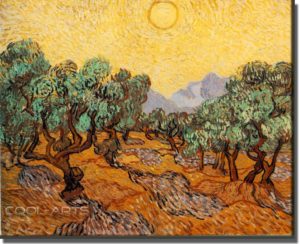 This tree has been a source of inspiration for many poets and painters. Neruda, García Lorca, and Machado drew inspiration from it and composed beautiful verses. Painters such as Renoir and Van Gogh also captured it in their canvases.
This tree has been a source of inspiration for many poets and painters. Neruda, García Lorca, and Machado drew inspiration from it and composed beautiful verses. Painters such as Renoir and Van Gogh also captured it in their canvases.
A pillar of Mediterranean food and of culinary art, olive oil is present in many culinary techniques. It takes part on the stirring fry, stewing, poaching, pickling, roasting, frying, dressing… As for olives, they are dressed in many ways, bringing joy to the tables of the South of France, of Morocco, and of many other Mediterranean countries.
Olive oil is also an essential part of traditional pharmacology. It improves the stomach and pancreas functioning, it prevents constipation and it reduces the risk of suffering from gallstones.
In the last years, it has also proven to be beneficial in the fight against cancer. In cosmetics it is used to stimulate the hair’s brightness, as a body oil, and, combined with lemon juice, it becomes an excellent skin cream.
Today, olive groves have become a part of the touristic offer as well, due to their beauty and ecological potential. There are olive routes marked and organized in several regions of Spain, Greece, and other Mediterranean countries, as well as centenary specimens – and who knows, maybe even millenary – that survive proudly in the Italian and Palestinian lands.
Undoubtedly, the olive tree and its fruits complement wonderfully the proverbial Mediterranean light.
Mario Blázquez
This post is available in: English Español


